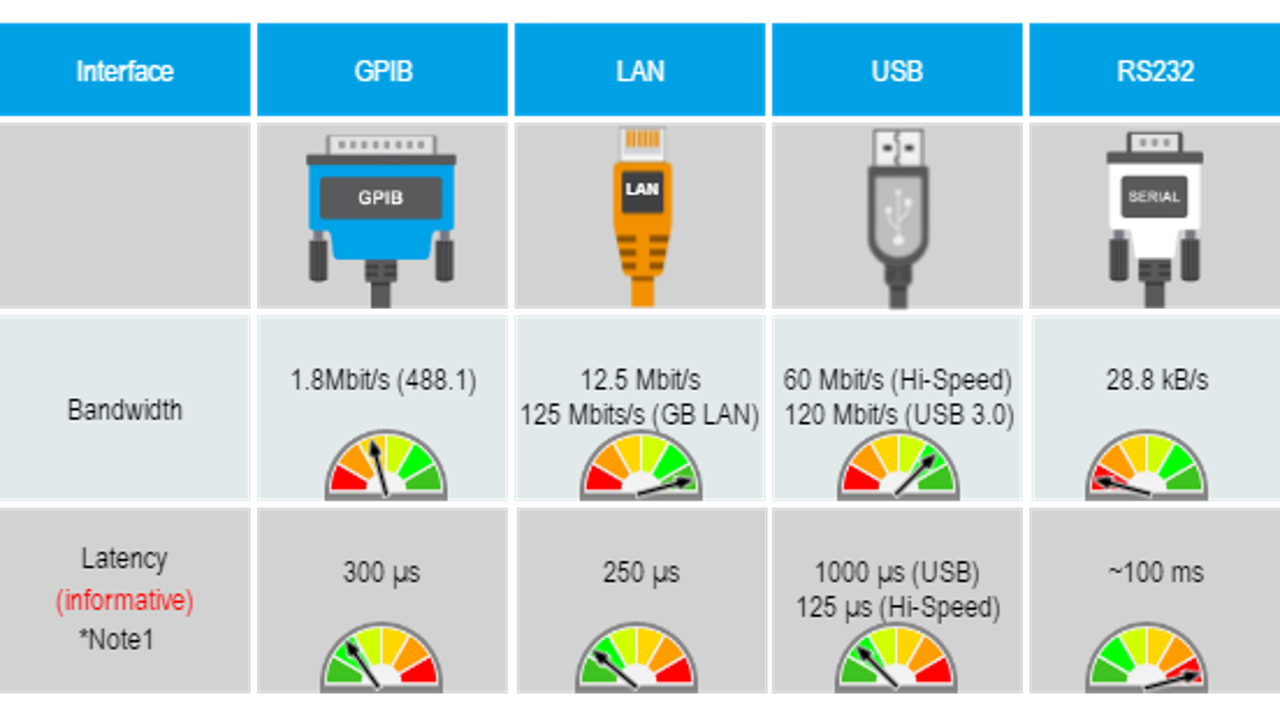9. Choosing the Fastest Communication Interface
There are many factors that influence selecting a physical communication interface. In this chapter, we focus solely on one parameter – speed.
When considering the speed of any communication unit, you always have to split the general term Speed into two different parameters: Latency and Bandwidth. To explain their meaning, we use an analogy of a water pipe:
The length of the pipe defines its latency – the time required to transport small unit of water from point A to point B. Therefore, the latency is measured in seconds.
The diameter of the pipe defines its bandwidth – the amount of water per second that can flow through its cross section. Thus, the bandwidth is measured in volume/second.
From this analogy, you see that a small amount of water (small data) is transported faster with a short pipe (small latency). Its diameter (bandwidth) does not play a significant role. In contrast, a pipe with big diameter (high bandwidth) transports large volume of water (big data) faster, even if it is longer (high latency). Let us have a look at the Latency and Bandwidth of the most common communication interfaces:




